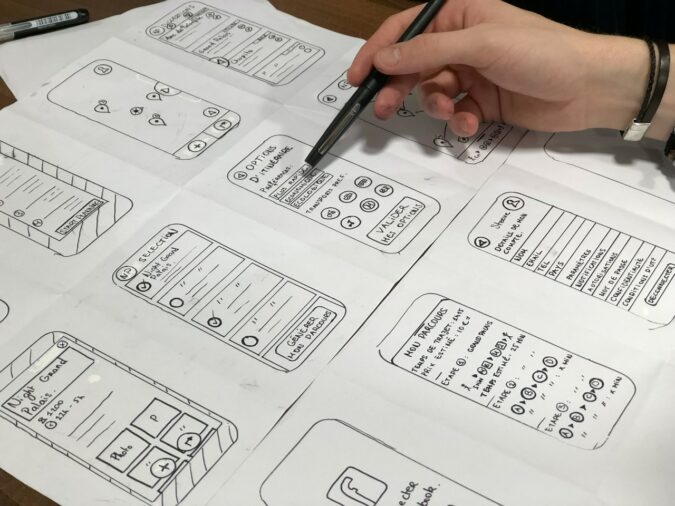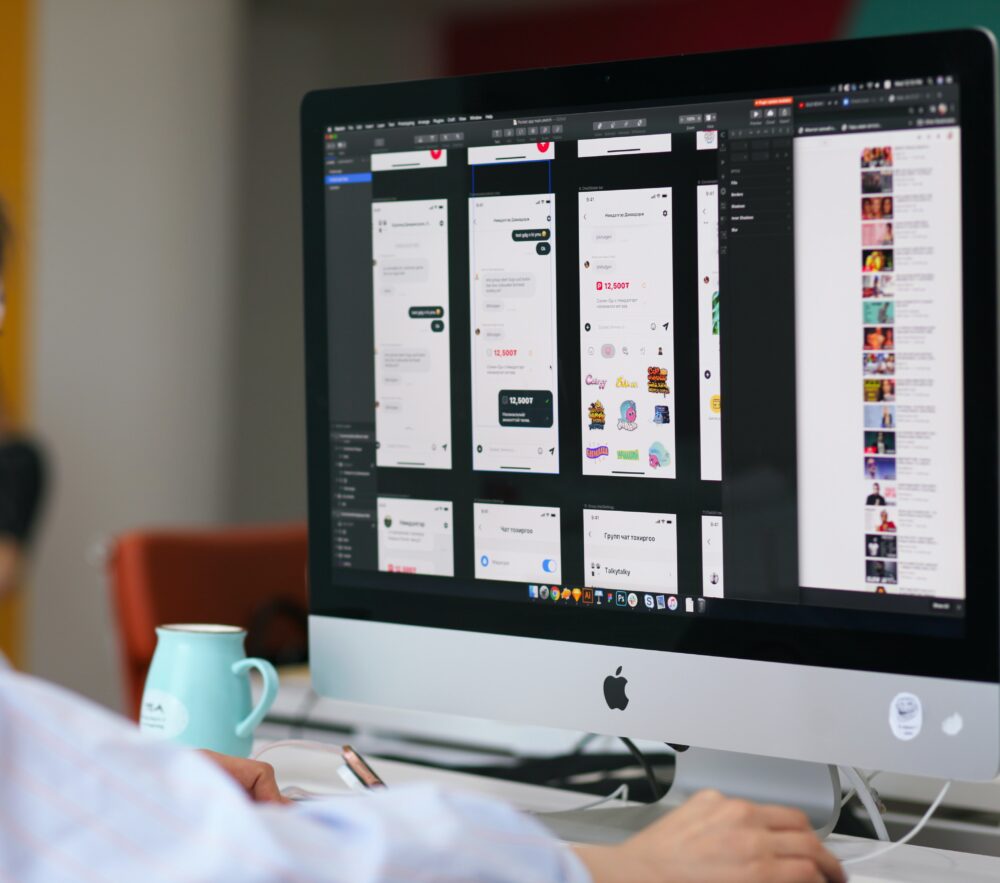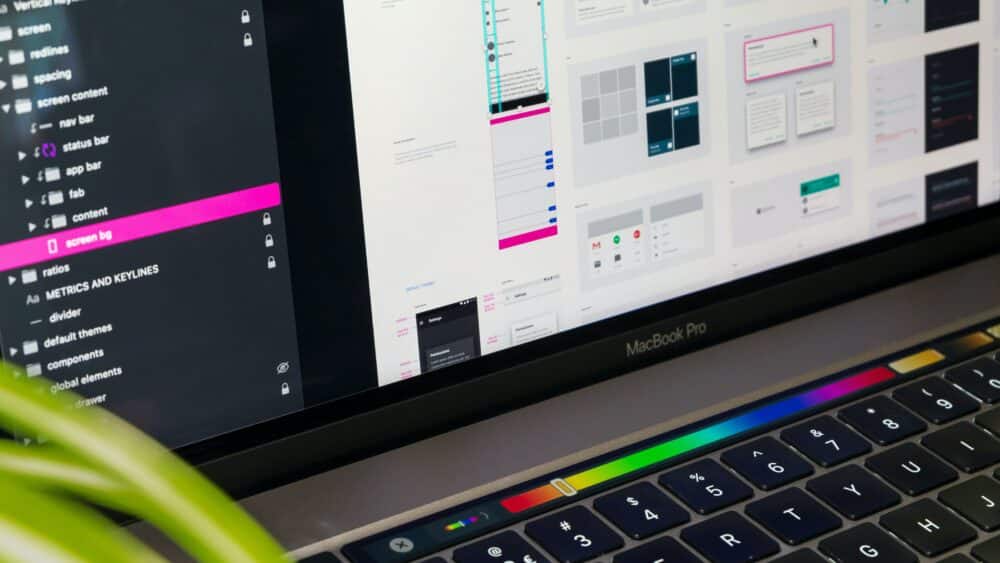
Become a Freelance UI Developer – Here’s How

To be a successful freelance UI developer, there are certain things you need to do to set yourself up for success. In this blog post, we will outline some tips that will help you grow your career as a UI developer. Keep in mind that these tips may not work for everyone, but they should help give you a good starting point! Read on to learn more.
Learn how to obtain self-employment insurance in your field:
Freelance Disability Insurance | Freelance Ghost Insurance | Freelance Workers Comp Insurance | Freelance Critical Illness Insurance | Freelance E&O Insurance | Freelance Airbnb Host Insurance | Freelance Commercial Auto Insurance | Freelance Commercial Property Insurance | Freelance Utah Home Insurance | Freelance Amazon Flex | Freelance Carpet Cleaning Insurance | Freelance Window Cleaner Insurance | Freelance Pressure Washer Insurance | Freelance Electrician Insurance | Freelance Mechanic Insurance | Freelance Junk Removal Insurance | Freelance Bartender Insurance | Freelance Hair Stylist Insurance | Freelance Barber Insurance | Freelance Taskers Insurance | Freelance Web Designer Insurance | Freelance Doordash Driver Insurance | Freelance Uber Driver Insurance | Freelance Plumber Insurance | Freelance Writer Insurance
User interface design: An overview

Types of user interface design
1. Command Line Interface
2. Graphical User Interface
3. Web-based User Interfaces
4. Mobile User Interfaces
5. Touchscreen User Interfaces
6. Conversational User Interfaces
7. Voice User Interfaces
8. Mixed-mode User Interfaces
9. Immersive User Interfaces
10. Augmented Reality interfaces
The importance of creative UI design for user satisfaction
When it comes to creative software design concepts, the user interface is one of the most important aspects to consider. After all, the user interface is what the user will interact with daily. As such, it’s important to make sure that the design is not only visually appealing but also easy to use. A good UI design should be intuitive and user-friendly, providing the user with a satisfying experience.
In addition, a creative UI design can help to set your software apart from the competition. With so many options on the market, a well-designed UI can be the deciding factor for users when choosing which product to use. Therefore, it’s essential to invest in creative UI design to ensure user satisfaction.
UI developers: who are they?
UI developers are responsible for the design and implementation of graphical user interfaces (GUI) for web and desktop applications. They work closely with UX designers to create visually appealing and user-friendly interfaces that meet the functional requirements of the application.
In addition to their design skills, UI developers must have a strong understanding of web technologies, such as HTML, CSS, and JavaScript. They must also be able to effectively communicate with both technical and non-technical stakeholders. As the demand for user-friendly and engaging applications continues to grow, so does the need for qualified UI developers.
What is the difference between a UI designer and a UX designer?
User interface (UI) design and user experience (UX) design are both important aspects of creating digital products that are easy to use and enjoyable for users. However, these two disciplines have different focus areas. UI design is primarily concerned with the look and feel of a product, including the layout, color scheme, and typography.
In contrast, UX design focuses on the user’s overall experience with a product, taking into account factors such as usability, purchase journey, and emotional engagement. While UX and UI designers often work together to create a seamless user experience, they have different skill sets and typically specialize in one area or the other.
The skills required to be a UI developer
A UI developer is responsible for creating and refining the user interface of a software application. This includes both the graphical elements, such as buttons and icons and the underlying code that makes those elements interact with the user. To be successful in this role, a UI developer needs to have strong skills in both graphic design and coding. They must be able to create visually appealing designs that are also easy to use, and they must be able to write clean, well-organized code that meets the specific requirements of the project.
In addition, UI developers need to be able to work closely with other members of the development team, such as UX designers and back-end developers, to ensure that the final product meets all of the necessary criteria. With these skills, a UI developer can create user interfaces that are both beautiful and functional.
How to Enter the Field of UI Development?
A User Interface (UI) developer creates the looks and feels of a software application. They work closely with a company’s software developers to create prototypes and high-fidelity designs that take into account a company’s branding, user needs, and technical limitations. A UI developer must be able to think creatively and critically to produce the most user-friendly experience possible while also keeping in mind the feasibility of their designs. Here are four steps you can take if you want to pursue a career in UI development.
1. Familiarize Yourself with the Basics of Design</h3
If you want to be a UI developer, it is important to have at least a basic understanding of design principles. This includes things like color theory, typography, layout, and grid systems. You don’t need to be a design expert, but it will be helpful if you have at least a solid foundation in design principles. Many online resources can help you learn more about the basics of design, such as Coursera, Udacity, or Skillshare.
2. Teach Yourself How to Code
To create prototypes and high-fidelity designs, UI developers need to know about coding languages. This doesn’t mean that you need to be an expert coder, but you should at least know the basics of HTML, CSS, and JavaScript. If you don’t have any experience coding, there are again many online resources that can help you get started, such as Codecademy or freeCodeCamp.
3. Choose the Right Tools for the Job
There are many different software programs that UI developers can use to create their designs; some are more specialized for certain tasks than others. It is important to familiarize yourself with the most popular design tools, such as Adobe Photoshop, Sketch, Figma, and Invision. Each tool has its own unique set of features and capabilities, so you must choose the right one for the task at hand.
4. Get Some Experience
The best way to learn more about UI development is by getting some real-world experience. There are many ways that you can do this; for example, you could look for internships or entry-level jobs at UX/UI design firms or in-house design departments at tech companies. You could also volunteer your time working on design projects for non-profit organizations or start your own freelance business. Any way that you can get some real-world experience will be beneficial for your future career as a UI developer.
A career in UI development can be extremely rewarding; not only do you get to use your creativity to design amazing user experiences, but you also get to use your technical skillset to bring those designs to life. If you’re interested in becoming a UI developer, there are four steps you can take: familiarize yourself with the basics of design, teach yourself how to code, choose the right tools for the job, and get some experience under your belt. With hard work and dedication, you can achieve your dreams of becoming a UI developer!
The Difference Between UI Developers and Frontend Developers

UI Developer
A UI developer is responsible for creating the graphical interface that users will interact with when they visit a website. This interface needs to not only be visually appealing but also needs to be easy to use and navigate. To create an effective interface, UI developers need to have a strong understanding of both design principles and user experience (UX).
Front-end Developer
A front-end developer, on the other hand, is responsible for taking the designs created by the UI developer and turning them into code that can be interpreted by browsers. To do this, front end developers need to be well-versed in programming languages like HTML, CSS, and JavaScript. Additionally, front-end developers also need to have a strong understanding of UX so that they can create code that adheres to the designs created by the UI team.
As you can see, there is a difference between UI developers and front-end developers. UI developers focus on creating the graphical interface that users will interact with while frontend developers take those designs and turn them into code. Both roles require strong technical skills as well as an understanding of UX principles.
5 Reasons to ditch the 9-5 and become a freelance UI developer
Are you a UI designer who feels unfulfilled in your current role? If you’re looking for a change of pace, freelancing might be the perfect option for you. Here are 5 reasons why becoming a freelance UI developer is a great career move:
1. You’re in control:
When you’re a freelancer, you’re the boss. You get to decide which projects you take on, which clients you work with, and how much you charge. That means no more putting up with difficult clients or working on projects that don’t interest you—you can pick and choose only the work that you want to do.
2. You can make your hours:
Tired of the 9-5 grind? As a freelancer, you can work whenever and wherever you want. That means no more late nights at the office or working on weekends. You can take a break whenever you need one, and work only when it’s convenient for you.
3. You can earn more money:
Want to make more money? As a freelancer, you can charge whatever rate you want—and if you’re good at what you do, chances are clients will be willing to pay it. In addition, many freelancers also get to keep 100% of the profits from their work, rather than splitting it with their employer.
4. You can work from anywhere:
One of the best things about freelancing is that it allows you to work from anywhere in the world. Whether you want to freelance from home or travel the world while working remotely, it’s all possible when you’re your boss.
5. You get to learn new things:
When you work as a freelancer, chances are good that you’ll end up working on projects outside of your comfort zone—which means that you’ll have an opportunity to learn new skills and broaden your horizons. In addition, because you’re not tied down to one company, it’s easy to switch gears and learn about new industries and fields as they emerge.
If you’re looking for an exciting and rewarding career change, consider becoming a freelance UI developer. With its many benefits—including greater control over your work, the ability to make your hours, and increased earning potential—freelancing is an increasingly popular choice for talented UI and UX designers who want more freedom and flexibility in their careers.
How To Get Started As A Freelance User Interface Developer?
The user interface (UI) is the communication bridge between a user and a computer or other digital device. Good UI design is critical for the success of any product that relies on users interacting with it, which is why there is high demand for UI designers who can create effective UI solutions. If you have experience designing interfaces and are looking to freelance, here are a few tips on how to get started.
1. Research the Market
As with any freelancing gig, it’s important to have an understanding of the industry you’re entering and who your potential clients might be. In the case of UI design, familiarize yourself with common software used by interface designers, such as Adobe Creative Suite, Figma, or Sketch.
Knowing how to use these tools will put you ahead in the job market since most employers will require their UI designer to be proficient with at least one of them. In addition, research popular trends in UI design so that you can stay up-to-date and relevant in your field.
2. Create a Portfolio
A portfolio is crucial for any freelancer, but especially for those in the creative field. Your portfolio will serve as a showcase of your skills and experience and will be one of the first things potential clients look at when considering hiring you. Make sure to populate your portfolio with your best work and keep it updated regularly as you gain more experience. If you don’t have any previous work to show, consider creating some mockups or doing some practice projects to build up your portfolio.
3. Network
In any freelancing gig, networking is key to landing jobs and building relationships within your industry. Attend industry events, join relevant online communities, or follow key figures on social media to start building your network. For UI design specifically, many cities have UI/UX meetups that provide great opportunities to meet other designers and learn about new trends in the field. Also, don’t forget to promote your work—sharing your portfolio or blog on social media or your websites helps increase your visibility as a freelancer.
There is high demand for qualified user interface designers who can create effective solutions that meet the needs of users. If you have experience in UI design and are looking to freelance, research the market, create a strong portfolio, and network with other professionals in the field. By following these steps, you’ll be well on your way to starting a successful career as a freelance user interface designer.
Tips for Growing Your Business as a Freelance UI Developer
As a freelance UI developer, you have the unique opportunity to grow your business in several ways. With the right approach, you can build a successful and sustainable freelancing career. Here are a few tips to help you get started:
Focus on Quality Client Work:
The first step to growing your business is to focus on quality client work. This means taking on projects that are a good fit for your skillset and deliverables that you are confident in your ability to produce. When you focus on quality client work, you will be able to attract more clients and grow your business more effectively.
Find Your Niche:
Another important tip for growing your freelance UI development business is to find your niche. When you specialize in a specific area, you will be able to better serve your clients and stand out from the competition. When you have a specialty, you can position yourself as an expert in your field and attract high-paying clients.
Build Strong Relationships with Clients:
Finally, it is important to build strong relationships with your clients. When you have strong relationships with clients, they will be more likely to return to you for future projects and refer other potential clients to you. To build strong relationships with clients, focus on communication, and deliver quality work on time.
As a freelance UI developer, you have the opportunity to grow your business in many different ways. By focusing on quality client work, finding your niche, and building strong relationships with clients, you can build a successful and sustainable freelancing career. Keep these tips in mind as you grow your freelance UI development business!
How to optimize your interface design for maximum user engagement?

First, keep your interface clean and clutter-free. Too much information on the screen can be overwhelming for users and make it difficult to find the content they’re looking for.
Second, use clear and concise language in your interface labels and instructions. Users should be able to quickly understand what each element on the screen does.
Third, use visuals to help guide users through your interface. Images and icons can help provide meaning and context for users.
Fourth, provide feedback to users as they interact with your interface. This can be in the form of messages that appear on the screen or audio cues.
By following these tips, you can create an interface design that is user-friendly and engaging.
What the Future Holds for Freelance UI Developers?
The freelance economy is stronger than ever, and it shows no signs of slowing down. A recent study showed that 57 million Americans freelanced in 2019, and that number is only expected to grow in the coming years. When it comes to freelancing, there are a lot of different disciplines that one can specialize in—but one of the most in-demand fields right now is UI development. So, what does the future hold for freelance UI developers? Let’s take a look.
Freelance Marketplaces Will Get More Competitive
As the number of freelancers continues to grow, so too will the number of platforms and marketplaces that they use to find work. This increase in competition will lead to more choices for clients—but it will also make it harder for freelancers to stand out from the crowd. To be successful in this increasingly competitive landscape, freelancers will need to focus on building a strong personal brand and developing a niche skill set.
Clients Will Demand More Value for Their Money
To stay ahead of the competition, freelance UI developers will need to offer clients more value for their money. This means going above and beyond the basic deliverables and taking the time to understand the client’s needs and objectives. Clients are looking for freelancers who can act as true partners in their business—not just someone who provides a service.
The Rise of Automation Will Threaten Some Jobs—But Create Others
The rise of automation is always a concern when it comes to any type of work—and UI development is no exception. While some jobs may be replaced by automated tools or outsourced to countries with lower labor costs, there will also be new opportunities created as businesses demand more innovative and user-friendly digital experiences. For freelance UI developers, staying ahead of the curve when it comes to new technologies and trends will be critical.
The future looks bright for freelance UI developers—but only if they’re willing to adapt to an ever-changing marketplace. By staying ahead of the curve, focusing on personal branding, and offering clients real value, UI developers will be able to thrive in the years to come.
Final thoughts
If you’re interested in a freelance career in user interface design, we hope this overview has given you some helpful advice and pointers. From what skills are required to enter the field to how to optimize your design for engaged users, there’s a lot to think about when pursuing UI development—but it can be an immensely rewarding career path. For more information on making the switch to freelancing, or taking your business to the next level, check out our other blog posts. As always, thanks for reading!





